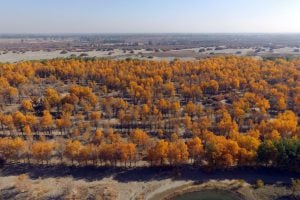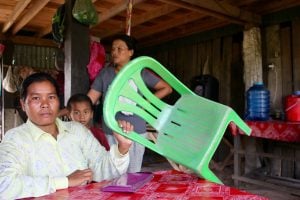Marcy Trent Long: This is Marcy Trent Long, welcome to Sustainable Asia. Three Billion is a four-part podcast series about the seafood trade in Hong Kong, China and Asia. It’s made in collaboration with chinadialogue and sponsored by Swire Group Charitable Trust.
Sophie le Clue: Hong Kong is really important. What Hong Kong does matters, and how we regulate and how we enforce our regulations and what we do in the courts really matters. And I don’t think that is percolated to the government here in that sense. So for example, traffickers in other countries getting really heavy offences for possession of certain species, going to prison for many, many years is one thing. But when you get to Hong Kong and it’s a much lesser sentence, what does that say?
Marcy: Welcome back for the last episode of Three Billion. In the last few episodes, we revealed why so many seafood products are highly valued in China and Asia. We also took at look at what consumer campaigns and international conventions have been tried before. Now, it’s time to look at what we can do differently. And in this episode, some of our previous guests come back, like Sophie le Clue of ADM Capital Foundation, who you just heard. But I’ll also talk with Bonnie Tang, a Greenpeace campaigner concerned with the most expensive of the four treasures of Chinese cuisine, the fish maw, and with Joyce Wu.
Joyce Wu: I’m Joyce Wu. I used to work for Traffic, for 20 years. It’s a wildlife conservation organisation.
Marcy: I wanted to talk to Joyce because, as a former member of Traffic, a wildlife trade monitoring network, she knows all the routes and tricks these smugglers use to move their illegal goods through Asia’s porous borders.
Joyce: When we’re talking about smuggling, we have to think about [how] it’s a trade. So the smugglers will also use the very well-organised and convenient commercial transportation and logistics systems. Regardless [whether] it’s for air cargo, sea freight, parcel or by personal transportation. Although the smugglers may also use their own transportation, like aeroplanes or boats, the well-developed commercial services [are] more convenient for them.
Marcy: A lot of endangered marine species are stowed away in large containers onboard cargo ships by reputable shipping companies. And as Sophie told me, we can’t really blame these shipping companies either, because current requirements for container labelling are incredibly vague.
Sophie: So currently, when something comes in Hong Kong, it’s very vaguely manifested. So you could have a manifest that says “dry seafood”. It doesn’t have to say it’s containing shark. So it’s difficult. I mean, if you’re an airline and you’ve banned carrying shark fin, and people are putting stuff in your plane that says “dry seafood”, how do you know that’s shark fin? It’s very difficult.
Marcy: So it’s easy to trick the commercial shipping companies. But even when a container is sampled and shark fin is found, then what? Not all sharks are listed on CITES, so one of the main problems that arises when a container full of shark fins is found, is whether the fins are from endangered shark species. Because only shark fins listed on CITES can be prosecuted as illegal marine trade. Yvonne Sadovy of the University of Hong Kong and Joyce Wu are working on a solution.
Yvonne Sadovy: With shark fin for example, it’s very difficult to distinguish unless you’re an expert between different species of shark that have produced the fin. And so having labs, molecular labs, which can do DNA analyses, or taxonomic experts, people who are experts in identification of various kinds, having those in Hong Kong as a coordinated body would be very, very valuable. And we already have that in the School of Biological Sciences, [and] that’s beginning to grow. And we already work to some extent with the agriculture and fishery department in Hong Kong when they need assistance in identifying different kinds of animals, parts of animals.
Joyce: We work with government and with forensic labs in China, so they will be able to help [with] forensic DNA tests. Whenever Customs find any suspicious shark fins, they will be able to send that species to the forensic lab for tests. And the evidence, the result, will be able to support the judiciary authorities later on.
Marcy: But Sophie raises another good point: is that really practical on such a large scale?
Sophie When they seize a container-load of shark fin, one sack contains tens of thousands of fins. So how many do you have to identify before you retain that seizure and you prosecute it. And also what we believe is, the juveniles of the CITES-listed species, not all of them can be identified visually. So you’d have to do DNA analysis. So if you seized a whole load of containers of small fins, you wouldn’t be able to identify without doing DNA analysis. And as far as I believe, Customs would have to have reason to suspect that they were CITES fins before they would do any DNA analysis, because they have to hold up the container, and they don’t want to do that. So there are some real problems in implementing CITES for species like sharks, particularly when it’s fins. And I think that’s why you don’t see so many seizures.
Marcy: In other cases, even when a certain product is confirmed to be CITES-listed, a different problem becomes evident, as I learned from Bonnie Tang of Greenpeace.
Bonnie Tang: Hello, I’m Bonnie.
Marcy: Bonnie studied abroad in Mexico, so she was very glad to get back there on her first marine campaign with Greenpeace, to document the illegal fishing of the totoaba. The totoaba is a fish in the family of croakers. These fish have unusually large swim bladders, or fish maws, which is one of those “four treasures” we spoke about in episode one, and exactly what the poachers are after.
Bonnie: So they cut this part and then they dry them out into yellow pieces of dried seafood. In Chinese tradition they believe that if you use the fish maw to cook soup and then drink it, it’s really good for [your] health. So it’s a really popular dried seafood, especially in Hong Kong and also in southern China.
Marcy: Chinese fishermen used to catch a local fish called the Chinese bahaba for their fish maw. The dish became so popular, that the bahaba was nicknamed the “money fish”.
Bonnie: But then because of overconsumption and also [over-fishing], the Chinese bahaba went extinct.
Marcy: So when the bahaba became endangered, the valuable trade in fish maw found another victim.
Bonnie: They just tell this story to their customers: “OK, you know we now have ‘money fish’ maw very, very similar to the one you bought before.”
Marcy: And now the totoaba is going the same way as the bahaba, with the added tragedy that totoaba poachers happen to fish in the same Mexican waters as the highly endangered vaquita, a tiny species of porpoise that gets caught in the totoaba fish nets and dies. According to the latest findings, there are only about 10 vaquita left in the world. Meanwhile, no one in China was even aware that the trade in fish maw could have such disastrous consequences.
Bonnie: We conducted the first investigation in 2015. At that time, actually no one knew fish maw [came from] an endangered species, because it is so common. Everyone in Hong Kong [buys] fish maw and they cook soup, but they don’t know a specific fish maw [comes from the] totoaba, [which is] a critically endangered species.
Marcy: So back in 2015, Bonnie and her colleagues tried something out. They headed to Sheung Wan, where Stan and I also were at the beginning of this series. Shockingly, about one in 10 retailers had the totoaba on display and ready to sell at an astronomical price.
Bonnie: It is around 100,000 Hong Kong dollars [for a medium-sized, 400-600 gram, fish maw. Ed.].
Marcy: But when the team shared their investigation with the local authorities…
Bonnie: …two dried seafood stores were slapped with fines, in total around 110,000 Hong Kong dollars.
Marcy: A hundred thousand Hong Kong dollars, that’s almost US$13,000. That’s about the same price they fetch for a single fish maw!
Bonnie: Uh yes! It’s really little. We did another round of investigations, because we wanted to see if it was still possible to find a totoaba fish maw in the dried seafood market, and then we found out that actually it is still possible to buy totoaba fish maw.
Marcy: Only now, you have to pay up front before the retailers will actually show you the product. Given the low penalties for selling illegal totoaba, Bonnie sees the cycle of selling illegal luxury seafood products in Hong Kong never ending.
Bonnie: You can also predict that, even if the totoaba goes extinct, they can just easily find another type of marine life, and then they re-package it and sell it again. Just like the Chinese bahaba.
Break to thank sponsors.
Marcy: In the last episode, we learned how hard it is to have marine species listed on CITES, the Convention on International Trade in Endangered Species. After the uphill battle faced by advocates like Yvonne, Gary and Stan to raise awareness on the fate of marine species, a battle that entails getting the species protected by a CITES committee that might have conflicts of interest, or training Customs officials to recognise the species in live or dried form, or even risking their lives to go undercover to expose illegal activities… after all that… the poachers and smugglers pay a measly fine and go on with their business.
Sophie: Does the punishment fit the crime? On what we’ve seen, I would say not. For example, and I’m going to have to use rhino as an example. In Zimbabwe if you’re caught with rhino, that’s nine years in prison. The maximum we’ve seen in Hong Kong is nine months.
Marcy: Why is the punishment so soft? Who is responsible for prosecuting these smugglers?
Sophie: The two enforcement agencies that then prosecute are either Customs or the Agriculture, Fisheries and Conservation Department (AFCD). From what we’ve seen, most of the prosecutions are undertaken by the AFCD.
Marcy: Again, it’s the same problem here in Hong Kong as in most of the rest of the world: the responsibility for prosecuting marine wildlife trade falls under the same department that regulates agriculture and fisheries, because fish has always been considered food, not wildlife.
Sophie: We don’t think it’s particularly a good thing, because if you’re prosecuting, for example a container load of shark fin, you need a lot of investigation to determine who’s behind that. So that needs a lot of investigation work. AFCD are not trained investigators, they are not actually trained prosecutors. They are an environmental department. Customs have all of the powers to do a lot of investigations. However, our sense is that wildlife is not a priority for them. And we don’t believe that some of the seizures are investigated to the fullest extent.
Marcy: Yvonne agrees.
Yvonne: One of the big challenges we have is that we aren’t considering wildlife, including seafood trade, as serious crime. And as a result of that, we just simply don’t have the investigative capacity or the enforcement capacity to be able to deal with this massive trade. And so it’s sort of out of control.
Sophie: The government’s view here is that wildlife crime is not organised and serious crime. And they have said to us, the Customs Department, that there is little evidence [of] organised and serious crime.
Marcy: So Sophie and her colleagues set out to prove that wildlife smuggling is absolutely organised crime!
Sophie: What we did was we reviewed 379 seizures over five years, and we reviewed another 98 from 2018 already. And the idea behind that was to really show that this is serious crime, that it’s organised because of the way it’s coming in. It has to take advantage of a sophisticated network to come from some part of Africa through maybe a second country into Hong Kong and out, either to, maybe to Malaysia, maybe to Vietnam, maybe into China. That has to be facilitated by an organised network.
Marcy: They also found that many of these groups smuggling wildlife are the exact same criminal groups that traffic drugs and weapons. Armed with that knowledge, Sophie and Yvonne now campaign to have the offence of wildlife crime prosecuted as organised and serious crime, so it’s not just down to the agriculture and fisheries departments to tackle these complex systems of smuggling.
Sophie: By giving the mandate to the police, we think there would be a better chance of a much more coordinated approach to wildlife crime globally. And I think this isn’t just Hong Kong. I think that’s a view generally, that there needs to be much more coordination with police forces across countries to bring down these networks, because they’re operating across continents.
Marcy: Already there are calls within Interpol to treat wildlife crime with the same gravity as other forms of trafficking. At an Interpol meeting late last year, participating countries, including China, agreed greater cooperation was necessary.
Is CITES enough? If we start viewing the illegal marine trade as organised and serious crime, is CITES the best instrument for our policemen to crack down on smuggler networks? Sophie told me about the real-world limitations to a convention that only regulates the trade of endangered species.
Sophie: If you’re protecting something in your own country but it gets exported illegally, or someone’s harvesting illegally and exporting it illegally, once it gets to Hong Kong it’s legally allowed in because it’s not on CITES. For example, India I believe has banned most shark fin exports. Now we still see shark fin being imported into Hong Kong, legally. Forget about the 12 species on CITES, for the remaining species, technically speaking, they shouldn’t be coming in from India, but they are. And because it’s not on CITES, the Hong Kong government isn’t really going to stop that, because it’s not our law.
Marcy: I was really surprised to learn that the United States actually has a law in place since 1900 that prevents that from happening.
Sophie: So in the United States you have the Lacey Act. And the Lacey Act takes into account whether something is illegally sourced in the country of origin.
Marcy: It’s unlikely that Hong Kong will jeopardise its status as a hassle-free port with intrusive regulation like the Lacey Act. But as China finds a new position as global leader in forward-thinking environmental policy, this could be a practical step towards better wildlife preservation. But even a Lacey Act only covers the actual trade between countries. On the open seas, outside of territorial waters, Gary Stokes of Oceans Asia sees another massive gap in CITES as a tool for conservation.
Gary Stokes: There’s a big fleet at the moment, 245 fishing vessels, just off Galapagos. And they’re just emptying, they’re just vacuuming out the high seas, but it’s the high seas, so it’s totally legal. And that’s the issue. Everybody’s flapping about, but it’s the high seas, you can’t do anything about it. And then they bring that back to port. They’re just fishing. That’s what they’re doing. But they’re doing it on an industrial size, and the scale of it is just out of this world. Because it’s classed as introduction from the sea. So it’s not crossing an international boundary. It was caught on the high seas and introduced to a port in China. CITES is the Convention of International Trade of Endangered Species, it’s the trade of endangered species internationally. So if you take it from one jurisdiction to another jurisdiction, that’s when you need a permit to go across the border. If you’re taking it from the high seas and bringing it into a port, it doesn’t cross a border.
Marcy: A trade convention is really only good at protecting marine wildlife if the species are traded. We need to do better than that. And there’s hope. Conservationists around the world are well aware of the limitations of CITES, and are trying to go beyond trade conventions.
Sophie: The question has been raised recently by the ex-CITES Secretary General John Scanlon [about] whether or not we should have a wildlife crime convention as opposed to the Convention of International Trade in Endangered Species. And maybe such a convention could address some of the gaps that are in CITES, which are not protecting species, because it’s not designed to do so in the same manner. And that’s a huge thing to do. But maybe it’s time to start thinking about that and discussing that.
Marcy: Reading the conclusions of the UN biodiversity report, it’s once again clear that we’re leaving our oceans in a sorry state. Sir Robert Watson, the chair of the assessment group, told National Geographic: “My biggest personal concern is the state of the oceans. We’re really screwing up the oceans in a big way.”
Gary: I think we are seeing some changes in society. Not fast enough though. I really do fear for the next 10-15 years. I just think we need a massive global shift, a consciousness shift, towards how we’re using our natural resources. And if that doesn’t happen in the next five years, I think we are in serious trouble.
Sophie: Wildlife globally is under massive stress, trade is part of that. So we have a role to play in Hong Kong, a really big role. Disproportionate actually. We’re seven million in the city, yet we could make a massive difference. The Hong Kong government could be training other countries in the region. The police force in Hong Kong has a good reputation, Customs have a good reputation. If they took this very seriously they could make a big difference.
Marcy: The free port of Hong Kong acts as an enabler for an unsustainable trade that’s driving down populations of the most amazing marine animals. But as my wonderful guests have said, better cooperation across borders can help us bring an end to this. Because seafood smuggling is not the problem of a single country. We’re all killing the sharks, as Gary said so well. With a thriving seafood trade that has been around for centuries, Hong Kong and China can be at the forefront of progress.
Stan Shea: The Chinese, we have been seen as part of the problem. But now you can see [in] Hong Kong, I think we have come to a moment [in] which we are a part of the problem, but we can be part of the solution.
Marcy: We can think twice about the source of fish we all love to consume. The tools are out there to make a conscious choice, whether we order food or do our groceries. You can find sustainable seafood guides online. I’ve been using them, and simply by being aware, I can make an impact on the people around me, the restaurants in my street, the retailers in my area, and the fishermen who know that a tradition that isn’t sustainable, won’t be a tradition for long.
Three Billion is produced by me, Marcy Trent Long, in collaboration with chinadialogue. The series is written and edited by Sam Colombie, and mixed by Chris Wood. Thanks to our sponsor, Swire Group Charitable Trust. Additional thanks to Zhang Chun and Ma Tianjie at chinadialogue Beijing, Josie Chan for translation, and our voiceover Crystal Wu. Interviews were recorded at the Journalism and Media School of the University of Hong Kong. The intro and outro music is made from repurposed and recovered waste items by Alexander Mauboussin. Learn more about his music at kalelover.net.

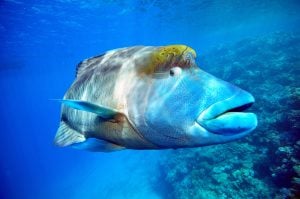

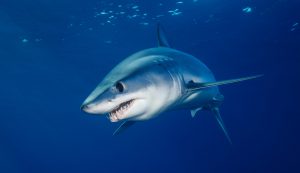
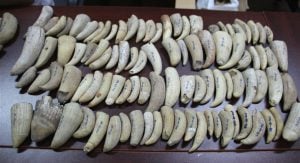
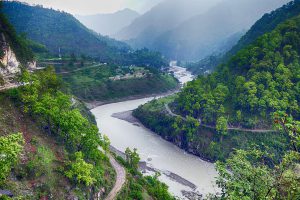
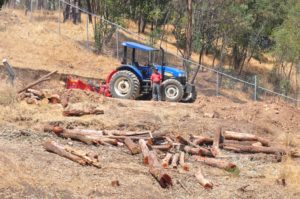
![map of active fires in Brazil as observed by Terra and Aqua MODIS between August 15-22, 2019 [image courtesy: NASA]](https://dialogue.earth/content/uploads/2019/08/NASA-amazon-1-300x251.jpg)
